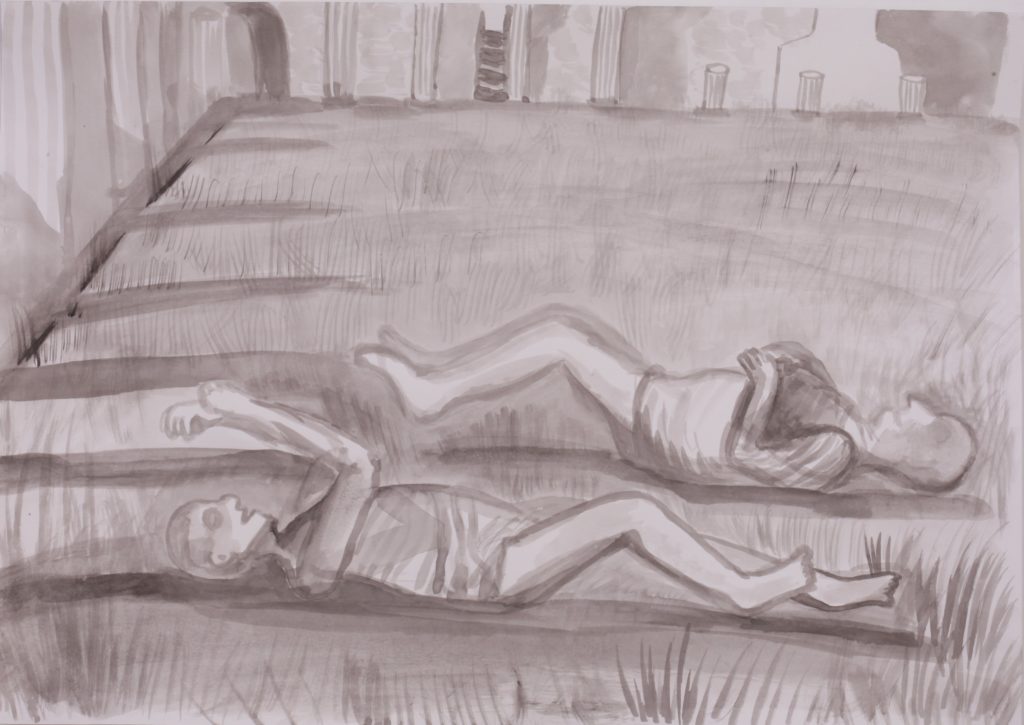Marc Monnier: “They are not statues, but corpses, moulded by Vesuvius; the skeletons are still there, in those casings of plaster which reproduce what time would have destroyed, and what the damp ashes have preserved – the clothing and the flesh, I might almost say the life. The bones peep through here and there, in certain places which the plaster did not reach. Nowhere else is there anything like this to be seen. The Egyptian mummies are naked, blackened, hideous; they no longer have anything in common with us; they are laid out for their eternal sleep in the consecrated attitude. But the exhumed Pompeians are human beings whom one sees in the agonies of death”






















Now I am working on a series of ink drawings that I started as an artist in Rome in February 2022. The series is based on the eruption of Mount Vesuvius in 79 A.D. that destroyed Pompeii, a city of the Roman Empire.
Plaster casts of people reproduce in detail the poses and feelings of the dead people. The inhabitants were buried in ashes, which formed a cement capsule around them. The corpses eventually crumbled away and a cavity formed in the ash layer. I could not stop and draw them.
The fact that only children, pregnant women, the elderly, and the sick remained in the city because they could not go far. The fact that people hoped until the end that everything would be fine and soon there would be a blue sky and everyone would be alive.
It was the pyroclastic current that was the main cause of death in Herculaneum, Pompeii, and probably in Stabiae during the eruption of Vesuvius in 79. Pyroclastic cloud with toxic and extremely hot gases and solid cases killed 2000 people.